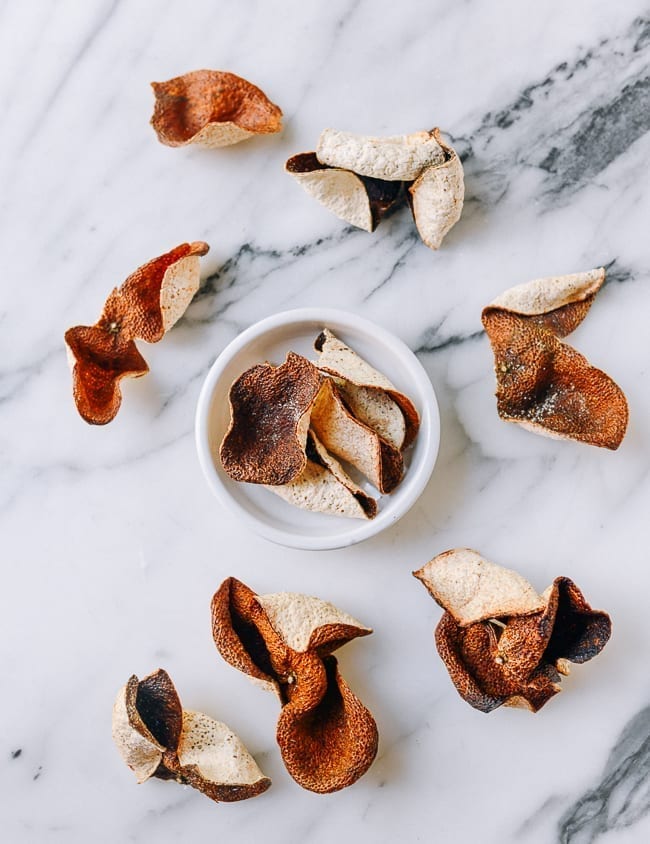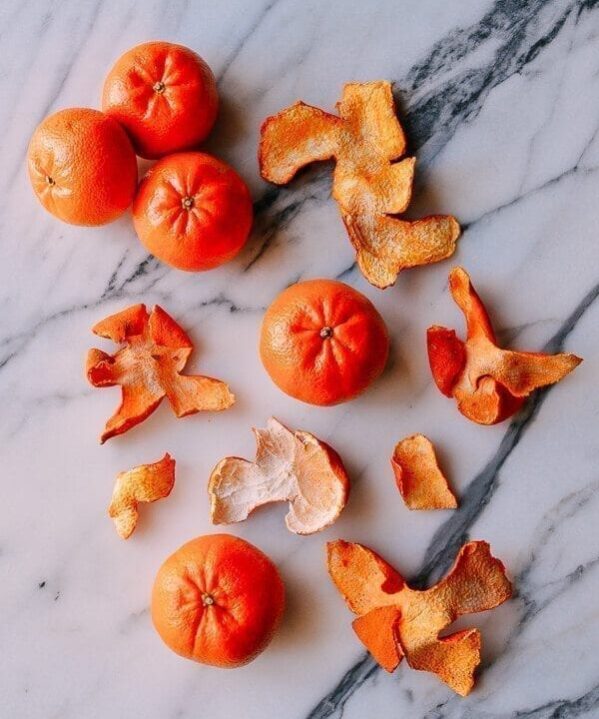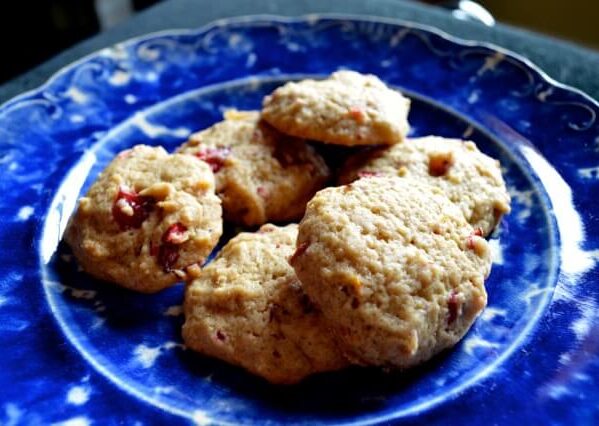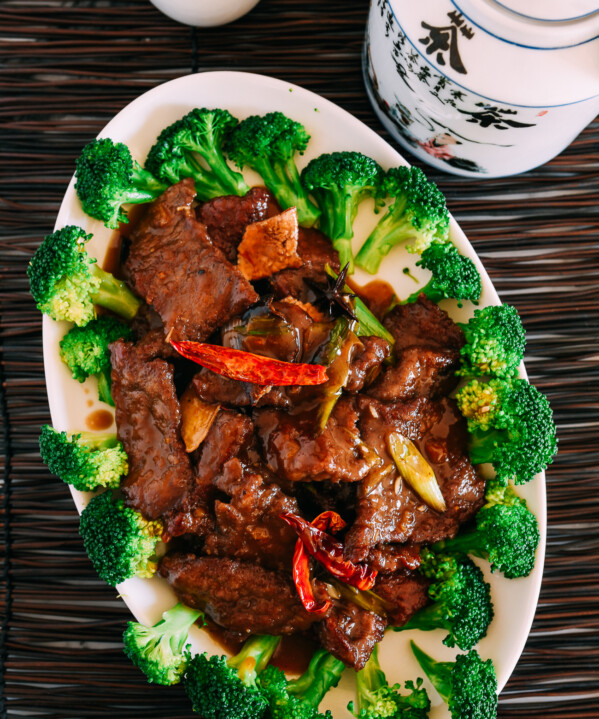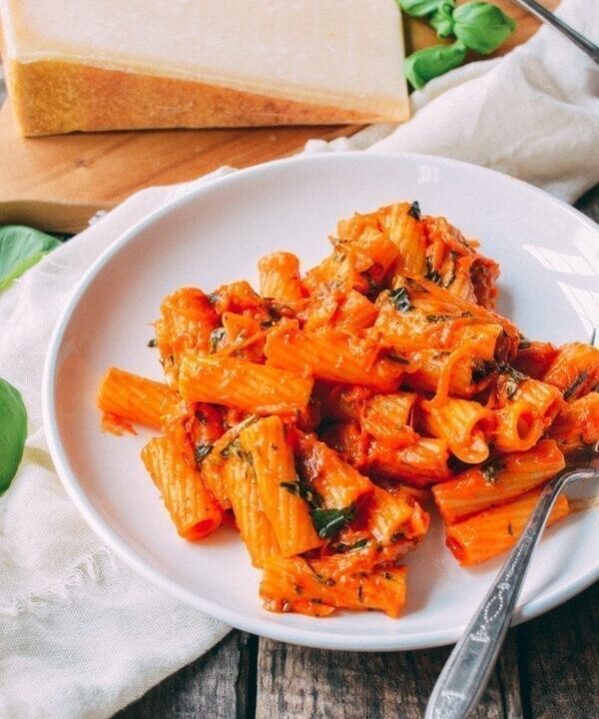In the same way that Western cuisine often makes use of lemon and lime zest, many Chinese dishes benefit from the addition of dried mandarin orange peel (chénpí, 陳皮) and other citrus fruit rinds (guǒpí, 果皮).
In this article, we’ll talk about dried mandarin orange peel in particular (also sometimes referred to as dried tangerine peel).
What Is Dried Mandarin Orange Peel? How Does It Taste?
Although some people would never consider eating whole dried citrus peel, it is a popular ingredient in Chinese cuisine, where it is used as an aromatic.
The district of Xinhui (located in Jiangmen City in China’s Guangdong Province) has become highly regarded for its mandarin oranges, which are harvested when green and sour to use for peeling and drying.
That’s right, the oranges are grown not for the fruit itself or its juice, but for its peel!
Dried mandarin orange peels are made by removing the skin of a fresh piece of fruit. The process is simple, but it must be done carefully to keep the juices from wetting the peel, which can cause it to spoil while drying.
We’ve dried our own peels. It’s super easy! Read more about how to make your own fragrant dried peels from fresh tangerines and mandarin oranges.
Once the peels are fully sun-dried (which usually takes at least 5 days), they darken and have an even sharper citrus aroma. While most of the spices and aromatics in your spice cabinet are best fresh, dried mandarin orange peels can actually get better with age.
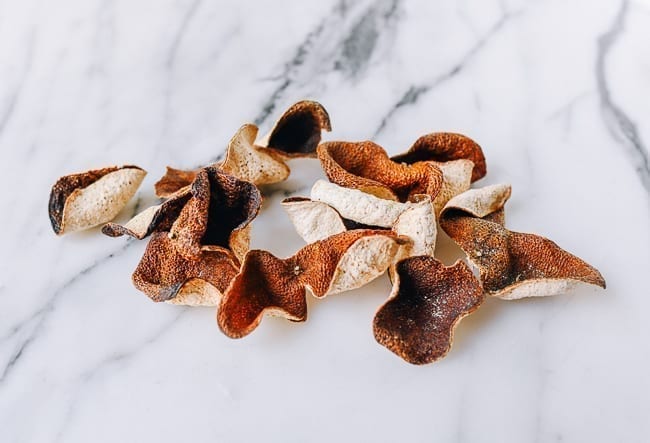
How Are Dried Tangerine Peels Used?
In Chinese cooking, dried tangerine peel is primarily used to complement the flavors of savory meals–especially beef, poultry, and fish. The rinds may be lightly simmered with other aromatics to flavor meat, as in our classic recipe for Orange Chicken.
In dishes like our Tangerine Beef, the tangy sweetness and slight bitterness of candied citrus peels elevates the other ingredients.
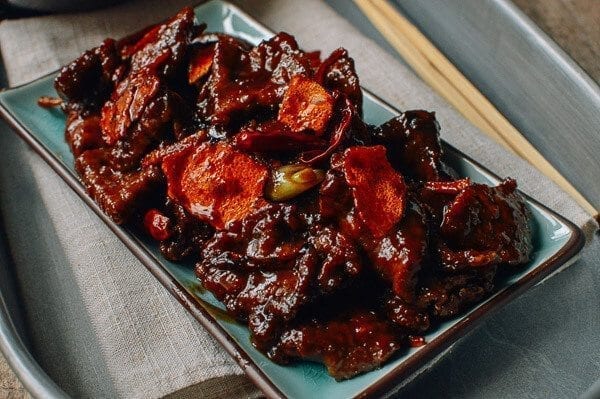
Dried mandarin oranges and tangerines also help to create a robust flavor when used to prepare our Roasted Braised Duck. The flavor of the peel creates a nice contrast that cuts the richness of braised meats.
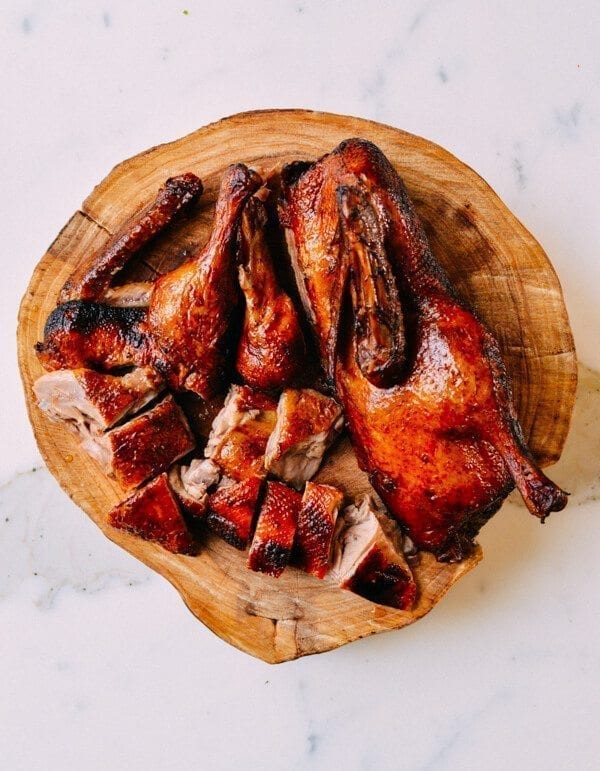
Dried or candied citrus rinds can also be a flavorful addition to desserts and confectionery like our from-scratch Sweet Red Bean Paste (useful for baked goods and steamed buns).
Buying & Storing
You can purchase dried mandarin orange and tangerine peel at Asian grocery stores as well as online. It’s usually packaged in plastic bags.
The pre-dried rinds can be pricey, though, so you can also make your own using fresh fruit, especially in late fall and winter, when they’re in season.
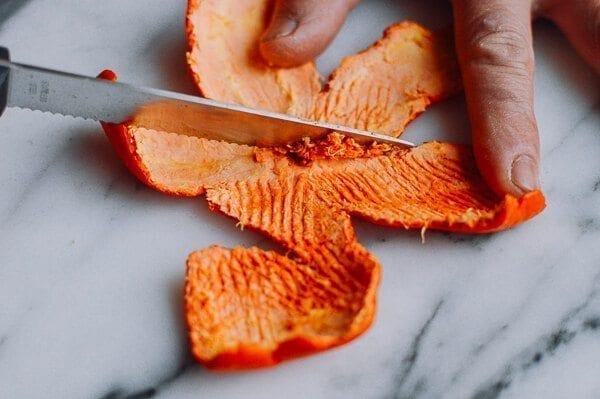
They can actually improve with age, so peels that are a year old are actually ideal! In Traditional Chinese Medicine, some think that the older the peel, the more effective it is at curing ailments like acne or throat pain.
We recommend storing the peels in an airtight container in a cool, dry place away from moisture. Use them within 2 years.
Substitutions for Dried Tangerine Peel
If dried tangerine or mandarin orange peel is not available, we’d recommend substituting fresh grated orange zest. Substitute about 1 teaspoon of zest per dried peel.
A little bit of lemon or grapefruit zest in addition may be able to stand in for the refreshing citrus fragrance of the dried peel.
